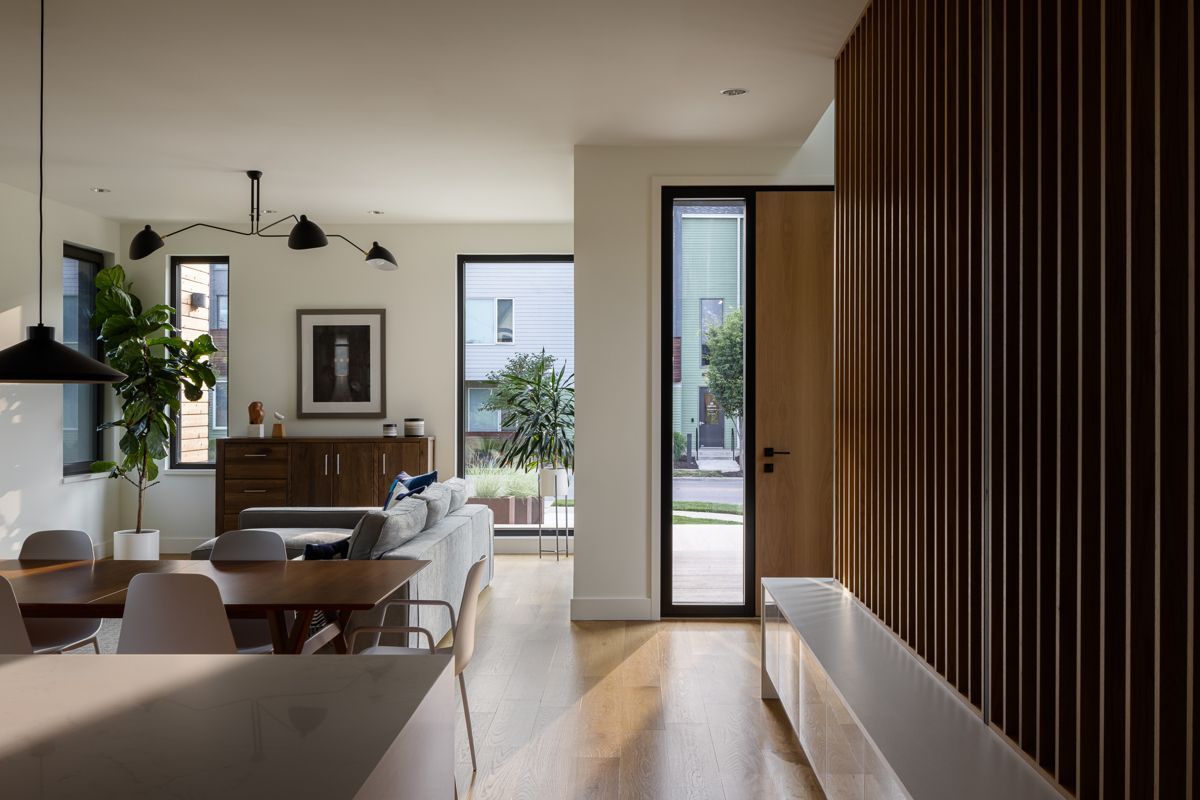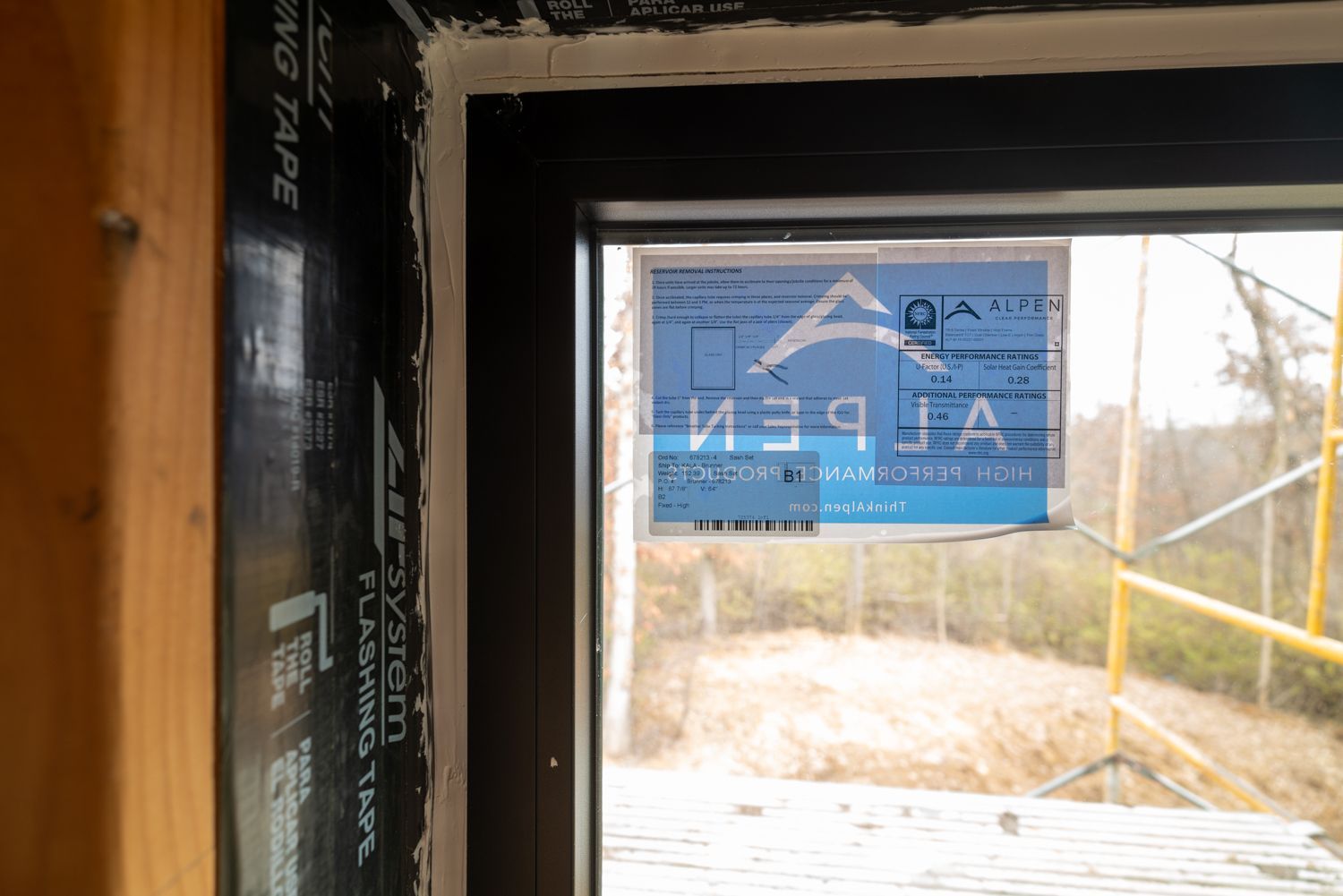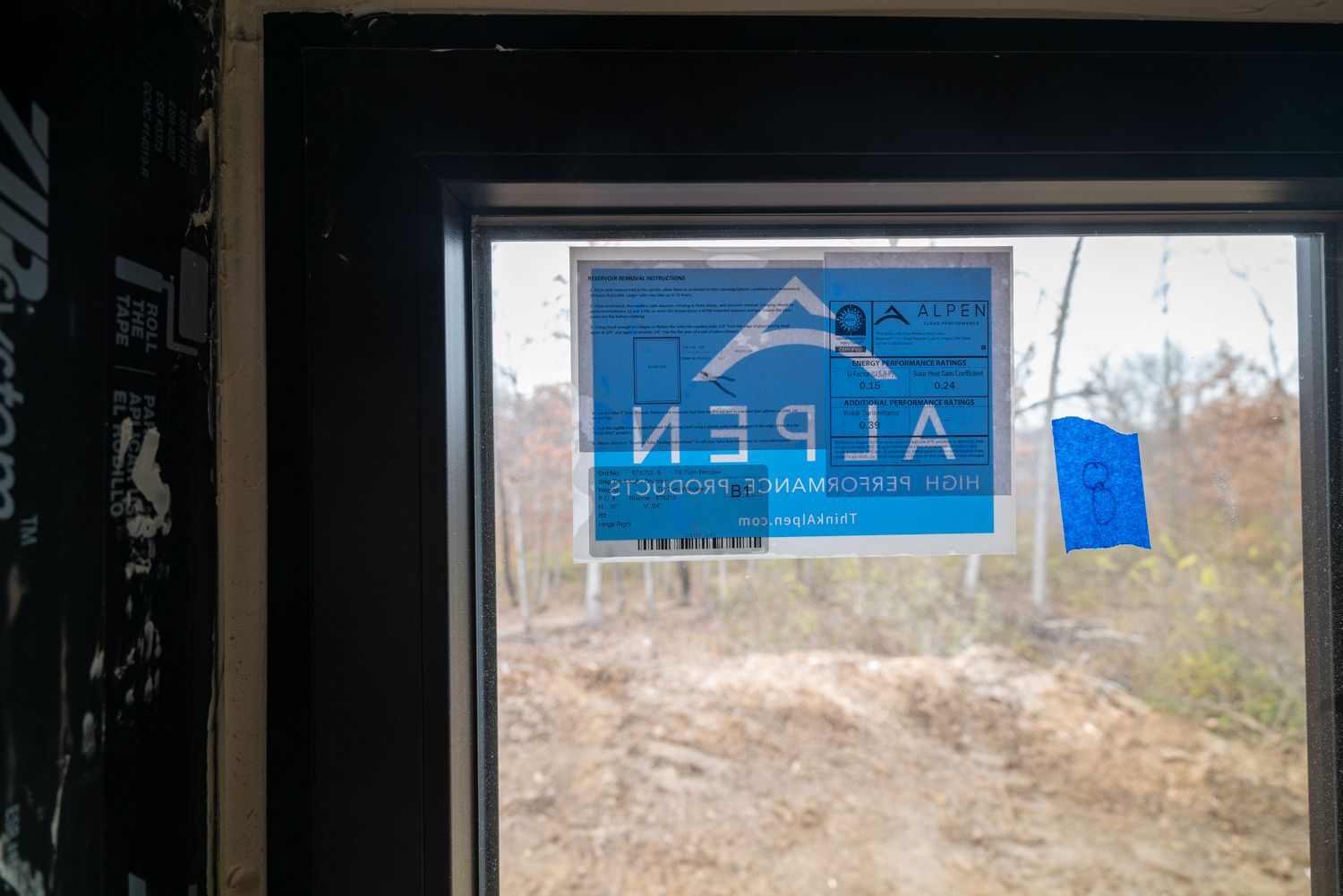The High Performance Window Explained

What Makes a High-Performance Window?
When you're buying your first home, windows probably aren’t something you think much about. But after owning a house—or a few—you start to realize how big of a difference they make. Bad windows mean drafts, noise, and expensive replacements. But in a Passive House, windows aren’t just an afterthought—they are one of five principles involved from the beginning that set them apart. Let’s break down why all windows are not created equal.
Why Do We Even Have Windows?
Windows serve three key purposes in a home. First, they connect you to the outdoors. This isn’t just about having a nice view—natural light and visibility can actually improve your mood, boost mental health, and enhance your overall well-being. Plus, they help you keep an eye on things—whether it’s kids in the backyard or the garden you’ve been working so hard on.
Second, windows let fresh air in. On a breezy day or if the house starts feeling stuffy, there’s nothing better than opening up a window.
Third, they harness the sun’s warmth. On a cold day, the right window placement can make a space feel cozy just from the natural heat coming in. That means less reliance on your heating system—and lower energy bills.
The Usual Window Problems
While every window does these three things, a lot of them come with unwanted issues, too. Poorly sealed windows don’t just let in light and air—they also invite in allergens, dust, and even pests. They might look fine at first, but over time, some windows can start to feel like looking through scratched-up glasses.
Another big issue? Temperature control. In winter, windows create cold spots and drafts. In summer, they let in too much heat, making rooms uncomfortably warm. They also leak energy, forcing your heating and cooling system to work harder, which leads to higher utility bills. And let’s not forget moisture—once it starts seeping in, it can damage the frames, the sills, and even your walls, sometimes leading to mold and mildew.
It’s no surprise that windows are one of the most common things homeowners have to repair or replace, often at a hefty cost.
What Do R-, U-, and STC Values Mean?
Passive House windows flip all those negatives into positives. They have high R-values and low U-values, which means they’re great at keeping heat where it belongs—inside in the winter and outside in the summer.
But here’s something manufacturers don’t always tell you: some companies measure these values from the center of the glass, where heat loss is the lowest, while ignoring the edges, where it’s worse (hello, condensation and frost). Premium windows don’t cut corners like that.
Then there’s STC—Sound Transmission Class. If you live on a quiet street, this might not matter as much. But if you’re near traffic, construction, or a noisy neighbor with a drum set, high-performance windows make a huge difference. More panes, better seals, and insulated frames mean a quieter home.
Speaking of frames, they matter too. Cheap windows usually come with aluminum frames, which are terrible at keeping heat in. High-performance windows use insulated materials that actually do the job right.
Understanding Heat and Light Transmittance
Unless you geek out over window science, "solar heat gain coefficient" (SHGC) probably isn’t a term you think about often. But it’s worth knowing!
SHGC measures how much heat from the sun a window lets in, on a scale from 0.0 to 1.0. The right number depends on where the window is and which way it’s facing. For example, south-facing windows usually perform best with a rating between 0.5 and 0.6.
Another number to check is "visual transmittance"—how much light passes through the glass. Like SHGC, it’s on a 0.0 to 1.0 scale. A window rated 0.41, for example, lets 41% of the light through. Windows with low SHGC ratings tend to have lower visual transmittance, too, because of special coatings that help control heat.
When we design a home, we optimize these values based on where each window is placed. For example, in this custom home in Kansas City, we used two varieties of
Alpen windows in different areas to maximize efficiency:
Why Installation Matters
Even the best windows won’t perform well if they’re installed poorly. The NFRC (National Fenestration Rating Council) doesn’t factor installation into their ratings, but a bad install can change a window’s U-value by up to 20%.
Some high-end homes have top-tier windows but lose all the benefits because they were put in by a subpar contractor. That’s not how we do things. At Kala, every window is installed by our own expert team, ensuring they’re sealed and placed for maximum performance.
Most new homebuyers just get a spec sheet and a builder’s promise that their windows will hold up. But given how often we hear from Kansas City homeowners dealing with failing windows in relatively new houses, we know that’s rarely the case. When you build a high-performance home with Kala, you get the peace of mind that every detail—including the windows—is built to last.
The Bottom Line
High-performance windows help keep your home comfortable year-round, lower energy costs, and protect against UV damage. Plus, they last way longer than standard options with minimal maintenance.
If you want to learn more about what makes a Passive House the most comfortable, durable, and sustainable home you’ll ever own, reach out to us!






